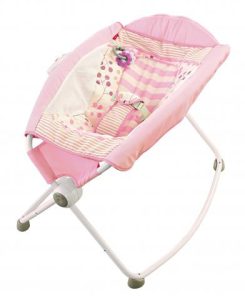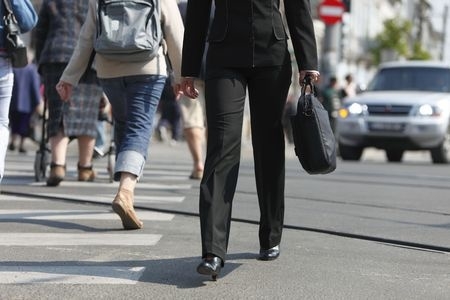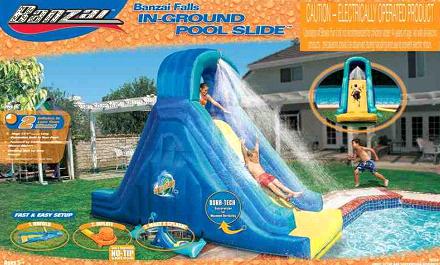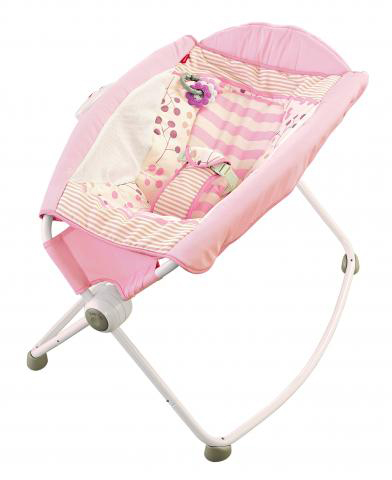Posts Tagged ‘“personal injury lawyer”’
After Millions of Recalls, New Safety Standard Proposed for Infant Sleepers

Fisher-Price recalled its Rock ‘n Play sleeper in April.
Last April, Fisher-Price made its jarring announcement: 10 babies had died in its sleepers after rolling from their backs to their stomachs. Fisher-Price urged parents to take children out of the sleepers once they reach 3 months old or begin turning themselves over.
This advisory didn’t stand. Soon thereafter, Consumer Reports published the results of its own investigation, which identified 32 infant deaths. Within the week, Fisher-Price and Mattel, its parent company, had recalled 4.7 million unsafe sleepers.
Now six months later, The Washington Post reports that 59 babies have died in Rock ‘n Play sleepers. At least two other companies, Kids II and Dorel Juvenile Group USA, have recalled their infant sleeper products. At the time of the recall, 5 infants had died on the Kids II sleepers.
Last week, the Consumer Product Safety Commission (CPSC) proposed a new safety standard for infant sleep products. This would limit the seat back angle for sleep to 10 degrees or less.
Why Was the Fisher-Price Rock ‘n Play So Dangerous?
Fisher-Price introduced the Rock ‘n Play in 2009, inventing the category of inclined sleepers, which allowed babies to sleep at a 30 degree angle. From the start, this design completely disregarded the American Academy of Pediatrics’ safe-sleep guidelines, which recommend babies sleep on their backs in an empty crib or bassinet to avoid accidental suffocation.
One problem was Fisher-Price didn’t do thorough safety testing or consulting with medical experts. But you can’t overlook the fact that Fisher-Price has been a giant in children’s products and how that influenced the discussion. As one pediatrician told The Washington Post, “This is not something I’d recommend using. But parents see that it’s from Fisher-Price and think, ‘They wouldn’t be able to sell anything that isn’t safe.’ ”
New Research Findings
The CPSC asked an assistant professor of orthopedic surgery who specializes in infant biomechanics to lead a study on inclined sleep products. The professor is based at the University of Arkansas for Medical Sciences. She and her team found evidence that babies age 2-6 months on average who were placed in inclined sleep products were at a higher risk of suffocation, when compared to a flat crib mattress.
- Her team concluded that none of the inclined sleep products tested were safe for infant use.
- The university team suggested the angle of the incline be no more than 10 degrees. The lying surface should be flat and rigid, not soft or plush-like.
- The team reported that babies who were placed on their stomach in their sleepers or who rolled over had to exert as much as 200 percent more core strength than those on a flat crib mattress.
- Finally, the university team reviewed police reports and interviews from 91 cases of infant suffocation. In many cases, the caretaker reported they had never seen the infant roll over before.
This was a recurring point in the team’s findings. Many of the children were rolling over for the first time when they were found.
Here is additional information for further reading:
UAMAS Research into Baby Biomecanics Shows Issues with Infant Inclined Sleepers, University of Arkansas
After Infant Deaths, Fisher-Price Rock ‘n Play Sleeper is Recalled, Massachusetts Injury Lawyer Blog
More Infant Sleep Products Linked to Deaths, Consumer Reports
Consumer Product Safety Commission: No More Inclined Sleepers, Chicago Sun Times
Free Consultation – Boston Product Liability Lawyers
With more than 100 years combined experience, Breakstone, White & Gluck specializes in plaintiff representation in product liability cases. We represent clients throughout Massachusetts, from Boston to Cambridge to Plymouth, Brockton and Cape Cod to the North Shore.
If you have been injured, learn your legal rights. For a free legal consultation, contact our firm at 800-379-1244 or 617-723-7676. You can also use our contact form.
Ford, GM and Nissan Make Auto Recall Headlines in 2019

Nissan has recalled 1.23 million vehicles because the backup camera displays are not working properly (Sept. 2019)
It is always wise to stay informed about your car and to regularly check for auto recalls. This was the lesson of the past decade and is sound advice again in 2019, as General Motors, Ford and Nissan have announced new safety defects.
General Motors Recalls
General Motors (GM) has issued several recalls during 2019, most notable 3.5 million SUVs and trucks with faulty brakes. This recall was announced in mid-September and was associated with 13 related injuries and 113 car crashes, according to Consumer Reports. This was a known problem in some GM models, including the Chevrolet Silverado, GMC Sierra pickup trucks and the Chevrolet Tahoe.
The National Highway Traffic Safety Administration (NHTSA) has been investigating since November 2018, when it received complaints. General Motors has been repairing vehicles since December 2018. A Canadian recall was issued in June.
The GM vehicles have a defect with a powered brake-assist system, potentially impacting the amount of pressure required to stop. There are several warning signs: drivers may experience a vibrating brake pedal, hear a ticking noise or see a message reading “Service Brake Assist” on the dashboard. GM dealers can re-program the braking software at no charge.
Nissan Recalls
Don’t trust the backup camera display if you are driving a Nissan. The automaker has just recalled 1.23 million vehicles – including many of its most popular models – because the backup camera displays are not properly returning to their default settings. This recall involves 2018 and 2019 models of the Nissan Altima, Nissan Murano, Nissan Pathfinder, the Infiniti and numerous other models. No injuries were reported. Read more.
Ford Recalls
Ford has also made negative headlines. Back in January, the automaker called back 953,000 vehicles worldwide as part of the ongoing Takata airbag recall. More than 782,000 vehicles were in the U.S. market. The recall covers 2010 through 2014 models, including the Ford Edge, Ford Ranger, Ford Fusion, Lincoln MKZ, Mercury Milan and the Ford Mustang.
Automakers continue to recall the Takata airbags, which have caused dozens of deaths and hundreds of serious injuries. The deadly recall has now touched 41.6 million vehicles, according to the NHTSA. While these recalls were first announced years ago, the NHTSA says the repairs must happen in phases over time. Priority has been given to the oldest vehicles in Florida and other warm weather states.
In August, more bad news and another recall. Ford announced that more than 550,000 more trucks and SUVs in North America had glitches – the backseats were not providing proper restraints. Among the vehicles: certain 2018 through 2020 models, including F-150 pickups, Super Duty trucks, Explorer SUVs and Expedition SUVs.
Toyota Recalls
In August, Toyota recalled 135,000 Corollas and Matrix hatchback vehicles from model years 2005 to 2008, according to Cars.com. These vehicles had airbags which needed replacement due to the Takata recalls, but these repairs were previously made and were not related to the latest recall.
Check Your Vehicle for Safety Recalls
You can visit the NHTSA website to check if your vehicle has been subject to a recall.
Boston Product Liability Lawyers – Free Legal Consultation
With more than 100 years combined experience, Breakstone, White & Gluck is known as one of the best personal injury law firms in Massachusetts. We have extensive experience handing cases which involve car accidents, truck crashes and pedestrian injuries in Boston and other communities. In some cases, a defective part may contribute to a car crash and injuries. Our attorneys have investigated and aggressively represented clients in these cases, ultimately obtaining the financial compensation they deserve.
If you have been injured in a car accident in Massachusetts, learn your legal rights. For a free legal consultation, contact us at 800-379-1244 or 617-723-7676 or use our contact form.
Following Lawrence Natural Gas Explosions, Common Questions from Homeowners, Residents and Those Injured
Residents will spend weeks, months and even years recovering from the Lawrence, North Andover and Andover gas explosions. And throughout New England, many are also asking: are we safe in our homes?
If your family has been affected by the Columbia Gas explosions or fires, we can assist you. Please call us at 800-379-1244.
On Sept. 13th, natural gas explosions and fires erupted in the three Merrimack Valley communities. At least 70 blazes in all, causing devastation, dozens of injuries and one death.
Residents were forced to evacuate as Columbia Gas shut off service for 8,600 customers in Merrimack Valley. Emergency responders spent hours and hours putting out flames and stabilizing the area.
The next day, Governor Charlie Baker declared a state of emergency, putting Eversource, not Columbia Gas, in charge of the recovery. As the NTSB investigates the Merrimack Valley natural gas explosion, Columbia Gas says it will rebuild 48 miles of gas pipeline in the region. This accelerates its modernization plan for the region.
Many residents have now returned to their homes, but they are without gas service and the National Transportation Safety Board (NTSB) continues to investigate. The NTSB is investigating a pressure increase detected in the natural gas pipeline north of Boston, according to CNN. According to WCVB, NTSB Chairman Robert Sumwalt said the investigation will focus on the activity of the pressure sensors on the gas line.
Breakstone, White & Gluck provides answers to a few common questions:
- Homeowners Insurance Agents. If your home or property was damaged, contact your home insurance agent. Columbia Gas has set up a property damage hotline, but the company is struggling to keep up with claims. Many people waited in line this weekend, only to be turned away. Call your home insurance agent first. Your agent works for you and can be a resource in navigating this stressful situation. For more help, read this advisory from the Massachusetts Division of Insurance.
- Property Damage to Your Car. Contact your auto insurance if your car was parked on your property and damaged as a result of the fires and explosions.
- Gather Receipts. Collect receipts for expenses you incur as a result of the gas explosion, including for hotel rooms, the purchase of new groceries and home maintenance. Keep a written list of other losses, such as if you miss work or your child misses school. Note everything, even things such as your child missing out on playing after-school sports for an extended period, if relatives cannot come stay with you for the holiday and purchases of new clothing. Share the list with your home insurance agent and Columbia Gas. It is important to keep a list on a daily basis so you don’t forget any of the details. Remember to use your cell phone camera too.
- Injury Claims. If you or a loved one have been injured, learn your legal rights. Injury claims are much different than claims for property damage. Injury claims should be handled by a personal injury lawyer who specializes in representing those who have been injured by gas explosions, fires, burns and construction accidents. These cases require intense and thorough investigation and knowledge of state and federal regulations. Read more about our law firm’s experience.
Free Legal Consultation – Breakstone, White & Gluck
Breakstone, White & Gluck and our personal injury lawyers are reviewing cases for injury victims of the Lawrence, North Andover and Andover natural gas explosions. If you have been injured, you may have the right to seek compensation for damages, including medical bills, lost wages, emotional and psychological injuries and physical pain and suffering. If you are married, you may also seek damages for the loss of consortium, which is compensation for the stress and hardship placed upon a spouse.
Learn your rights. For a free legal consultation, contact our lawyers at 800-379-1244 or 617-723-7676 or use our contact form.
Do You Have Insurance for Your Drone?
 More than a million drones were sold this holiday season. If one happened to land in your pile of presents, remember that taking to your neighborhood skies comes with responsibilities. We offer a few reminders about insurance and protecting yourself from financial liability if there is injury or property damage. As a drone operator, you want to make sure that you will be able to pay for damages or personal injury that was caused by your negligence.
More than a million drones were sold this holiday season. If one happened to land in your pile of presents, remember that taking to your neighborhood skies comes with responsibilities. We offer a few reminders about insurance and protecting yourself from financial liability if there is injury or property damage. As a drone operator, you want to make sure that you will be able to pay for damages or personal injury that was caused by your negligence.
Homeowners and Renters Insurance. Start by reviewing your homeowners and renters insurance policies. Then speak to your insurance agent to learn if drone-related accidents are covered.
According to the Insurance Information Institute, drones are most likely covered under these policies. The liability portion of your homeowners insurance may cover you in lawsuits for bodily injury or property damage. Your policy may also provide no-fault medical coverage if someone is accidentally injured by your drone. But there are limits; medical bills for you and family members may not be covered by no-fault medical coverage.
Another reason to have insurance for your drone: If your drone causes bodily injury or property damage, and a claim is brought against you, proper insurance will not only cover the damages; the insurance company will also provide a lawyer to defend the claim against you.
Check with your insurance agent. The insurance industry is actively discussing this topic. Already, some insurers may exclude drone-related accidents from homeowners insurance policies. Others may choose to do so in the future.
Car Insurance. Your auto insurance policy may cover property damage resulting from crash landings or related accidents. Ask your auto insurance agent.
Commercial Users. If you operate a drone for business (even for a part-time business), you should ask your agent if you are covered. This would not typically be covered under your homeowners insurance policy.
Safety Reminders. Never use your drone recklessly and always follow current safety regulations. Drone owners are required to register drones with the FAA and fly at or below 400 feet. Failure to do so could result in a fine. To learn more, watch this safety video from the FAA.
Theft. Consider theft insurance if it make sense. Some drones are small and can be easily stolen. But remember many homeowners have to pay a deductible if they file a claim. If you own an inexpensive drone it will likely be less than your deductible. Maybe it was time to upgrade to the fancier drone anyway.
Memberships. If you do not have adequate coverage, consider your options. You may be able to buy more insurance coverage from your carrier or research other insurance carriers. You may also qualify for coverage if you belong to a membership organization or club. The New York Times reported the Academy of Model Aeronautics offers group liability coverage as part of its $75 per year membership. This may pay for damages after your homeowners insurance policy is exhausted.
Time to Get Started
If you are a drone owner, we hope you take the time to check with your insurance agent so you understand your potential liability. Drone crashes can happen on your property or a neighbor’s property and you want to be prepared.
Here are two resources:
“Getting a Drone as a Gift? Check Your Insurance,” New York Times.
Breakstone, White & Gluck Welcomes Attorney Reza Breakstone
https://www.youtube.com/watch?v=pPY94mFkyQI
From the stage to the courtroom, Attorney Reza Breakstone brings a unique blend of skills and experience to the firm. We are pleased to welcome Reza, who will focus on representing personal injury clients at Breakstone, White & Gluck. He will also counsel small businesses in strategic development, litigation and contract matters.
Reza graduated from the University of Michigan in 2002, where he received several leadership awards. After college, Reza worked for two years as a legislative aide for the junior Senator from Michigan in Washington D.C. He returned to Boston to attend Northeastern University School of Law. After graduation from law school in 2008, Reza worked for four years at a prestigious Boston firm, concentrating in complex business litigation, federal antitrust defense and security litigation. During that period, he received a special assignment as an Assistant District Attorney in Suffolk County District Attorney’s office where he prosecuted criminal cases. Working in the West Roxbury Division of Boston Municipal Court, he tried numerous bench and jury trials to verdicts.
“What I learned in the DA’s office is your value as a lawyer is embedded in your judgment, interpersonal skills and treatment of others,”
Reza says. “Having good relationships is essential. When you are at a large firm, having good relationships is important, but productivity is a much more important measure.”
In addition to his legal pursuits, Reza has a passion for acting and improvisational theater. He has performed in numerous independent films and improvisational theater troupes in New England and Los Angeles.
Reza looks forward to working on behalf of the firm’s injured clients while continuing to assist small businesses and start-ups with development strategies. In both pursuits, he looks forward to furthering his commitment to “the business of helping people.”
“When you are put in a position to represent someone, it really comes down to confidence and trust,” he said. “I have a lot of people who respect me and trust me. I think the latter is as important as anything.
That really helps when people are bringing their lives to you and saying help me out. It’s because they trust you to get the job done.
To learn more about Reza, please visit his attorney bio page.
Attorney Sam Segal Elected Treasurer of Massachusetts Bar Association’s Young Lawyers Division Board of Directors
 Congratulations to our associate, Sam Segal, who has been elected treasurer of the Massachusetts Bar Association’s Young Lawyers Division Board of Directors for the 2014-2015 year.
Congratulations to our associate, Sam Segal, who has been elected treasurer of the Massachusetts Bar Association’s Young Lawyers Division Board of Directors for the 2014-2015 year.
Segal graduated from Northeastern University School of Law in the spring of 2010. He joined Breakstone, White & Gluck as an associate after completing a co-operative internship with the firm as part of his studies. He earned a double-major undergraduate degree with honors from Arcadia University in Pennsylvania.
At Breakstone, White & Gluck, he specializes in personal injury cases, including those involving car accidents, bicycle accidents, medical malpractice and construction accidents. He was selected as a Massachusetts Super Lawyers Rising Star for 2013. Segal has participated in Young Lawyers Division events for several years and also volunteers as an attorney-coach for the Cambridge Rindge and Latin School Mock Trial Team.
Breakstone, White & Gluck has long been active with the Massachusetts Bar Association. Attorney David White served as president for the 2007-2008 term. White and attorney Marc Breakstone have led Continuing Legal Education seminars over the years, in topics such as personal injury and how to start a solo law practice. The firm is also a sponsor at the annual dinner each spring.
We congratulations all the Young Lawyers Division Board of Directors. Read the full announcement.
Read More
Pedestrians Being Fined in Some U.S. Cities
 Pedestrians now have to watch out for more than just traffic in two major cities.
Pedestrians now have to watch out for more than just traffic in two major cities.
Jaywalking laws have traditionally gone unenforced in many cities, but New York City and Los Angeles are now telling pedestrians to follow the letter of the law or face citation. Pedestrians are surprised, and in some cases, are facing hefty fines for crossing the street before the traffic signal changes. One man in Los Angeles was ticketed $197 as he walked to work.
“I didn’t even know that was against the law,” he told the New York Times. “I was like, “You are the L.A.P.D., and this is what you are doing right now?”
New York City Police are taking the same steps. The city saw 12 pedestrian fatalities in January, prompting new Mayor Bill de Blasio to announce Vision Zero, a plan to eliminate traffic deaths within 10 years. Vision Zero focuses largely on drivers, but at the same time, New York City Police have started enforcing jaywalking laws.
Pedestrians have responded strongly against enforcement, both in Los Angeles and New York City. In Los Angeles, a lawyer who was ticketed as he walked to a local courthouse told the New York Times:
“Honestly, I cussed them out for about five minutes. I told them what a stupid waste of time this was, and wasn’t it great that they had two police officers standing there when there are obviously more important issues out there.”
In New York City, an 84-year-old man, Kang Wong, has filed notice he plans to sue the city and police department for $5 million. He alleges he was pushed against a wall and beaten as he was cited, sustaining head injuries and other trauma.
In New York City, three of the pedestrians were killed in the Upper West Side, near Broadway and 96th Street. They were a 9-year-old boy who was hit by a taxi as he crossed the street with his father, a young doctor struck by an ambulance outside her apartment building and a 73-year-old man hit by a tour bus.
After these deaths, the city installed electronic signs warning pedestrians to use the crosswalks. Police stood by with a bullhorn, citing pedestrians who violated jaywalking laws $40-$100.
Every city has an interest in this conversation, including here in Boston and Massachusetts. Our state sees an average of 86 pedestrian deaths each year, nearly one fifth of all traffic fatalities, according to WalkBoston, a non-profit advocacy organization which represents pedestrians and 75 cities and towns across the state.
But rather than ticket pedestrians, WalkBoston advocates for improving infrastructure and education. For instance, it notes that 90 percent of pedestrians killed are struck by cars traveling 40 mph compared to 5 percent who die by cars traveling at 20 mph. One way to encourage drivers to slow down is to reduce travel lane widths, the organization says.
Perhaps you are wondering what the fine for jaywalking is in Massachusetts. We hope you are sitting down: It is $1.00! But after three offenses, the fine doubles M.G.L. c. 90, § 18A. Municipalities won’t balance their budgets on jaywalking tickets, that’s for certain.
Related:
New York City takes aim at jaywalking, The Boston Globe.
Read More
Our Thanksgiving Wishes
 The lawyers and staff at Breakstone, White & Gluck wish you a very Happy Thanksgiving. We hope you enjoy this special time with family over a tasty meal (with plenty of leftovers!). We also appeal to you to take a few steps for safety’s sake:
The lawyers and staff at Breakstone, White & Gluck wish you a very Happy Thanksgiving. We hope you enjoy this special time with family over a tasty meal (with plenty of leftovers!). We also appeal to you to take a few steps for safety’s sake:
Drive Safely. AAA projects nearly 39 million U.S. travelers will drive 50 miles or more from home this Thanksgiving holiday weekend. If you can, avoid traveling during busy times such as Thanksgiving Eve. No matter when you drive, make sure you pay attention, monitor traffic reports, never drive when you are drowsy and start your trip with a full tank of gas.
Distraction-Free Driving. Commit to not use your cell phone while driving, especially in traffic congestion. Do not make phone calls or text while driving, the latter of which is against the law in Massachusetts. If you are using your cell phone as a GPS, have someone in the passenger seat handle your phone.
Smoke Alarm Batteries. Change your smoke alarm batteries, if you did not do so in early November, when Daylight Saving Time ended. About two-thirds of home fire deaths occur in homes with no smoke alarms or working smoke alarms, according to the Consumer Product Safety Commission (CPSC). You should test the batteries in all your home’s smoke alarms monthly.
Cooking Fires. The threat of a cooking fire triples on Thanksgiving, according to the CPSC. Stay in the kitchen while frying, grilling or broiling food. If you have to step away, turn off the stove.
Prevent Food Poisoning. A few reminders are regularly wash your hands in the kitchen, along with food surfaces and utensils. Separate raw meat and poultry from other food. Cook your turkey to a safe minimum internal temperature of 165 degrees. The Centers for Disease Control and Prevention also recommends cooking your stuffing in a separate dish outside the turkey. As for leftovers, make sure to eat within three or four days.
Keep Children Away From Food. Keep young children out of the kitchen while cooking. They could spill hot liquids or scald their skin on the oven.
Look for Hazards to Children. If you are at an unfamiliar home, do a visual scan of potential dangers for children. Keep them away from brick fireplaces, garage entrances and other hazards which could cause them injury.
Turkey Fryers. The National Fire Protection Association discourages use of turkey fryers. But if you use one, make sure you take it outside, a good distance from your home or any structure. Do not cook on the roof of apartment or condominium buildings. Dress so you are prepared to deal with hot oil spills and never leave the fryer unattended.
No Drinking and Driving. Do not drive after consuming alcohol. You risk seriously injuring yourself or someone else in a car accident. You could also be criminally charged.
This message is especially important on Thanksgiving. Mothers Against Drunk Driving (MADD) reports drunk driving deaths continue to increase during the holiday season. Many accidents occur on Thanksgiving Eve – a day it calls Blackout Wednesday – and the early hours of Thanksgiving Day. In 2010 alone, 174 people in the U.S. were killed during the Thanksgiving holiday weekend, in addition to many others who were injured.
Related:
14 Things to Know About Traveling on Thanksgiving Weekend in Massachusetts, North Reading Patch.
Boston Traffic Reports, Boston.com.
It’s Turkey Time: Safely Prepare Your Holiday Meal, Centers for Disease Control and Prevention.
Thanksgiving Home & Travel Safety Tips, Mass.gov.
Read More
Trampolines, Inflatable Slides Among Dangers At Swimming Pool

Every year, thousands of people in the U.S. die in drownings. Many of these are young children who drown in swimming pools. Last summer alone, nearly 140 children under age 15 drowned in swimming pools and spa tubs, according to the Consumer Product Safety Commission (CPSC).
While the risk of personal injury and wrongful death from drowning has long been known, new dangers have emerged at pools in recent years. As many homeowners have removed diving boards for safety and insurance reasons, many others are purchasing inflatable slides, sports nets and trampolines to enjoy by the pool.
Two recent Massachusetts cases touch on these risks. Last month, the Supreme Judicial Court ordered a new trial in Dos Santos v. Coleta, where the plaintiff was paralyzed in 2005 when he jumped off a trampoline and struck his head in a two-foot inflatable wading pool. The pool and trampoline were owned by his half brother, the defendant.
The SJC found the trial court judge provided improper instructions when he said the jury could stop deliberating if they concluded the danger of jumping off a trampoline and into the pool was “open and obvious.”
The SJC ruled that the trial judge should have also instructed that a property owner is not relieved from correcting such dangers in cases where they can or should anticipate that the dangerous condition will cause harm.
“Because we conclude that a landowner has a duty to remedy an open and obvious danger, where he has created and maintained that danger with the knowledge that lawful entrants would (and did) choose to encounter it despite the obvious risk of doing so, we now reverse,” wrote Justice Cordy.
The plaintiff, Cleber Coleta Dos Santos, had been playing with his young son on the trampoline when he attempted to flip off and into the pool at his half brother’s Framingham home. He suffered permanent paralysis. His half brother and sister-in-law owned the home, but had moved out a few days prior, leaving the trampoline positioned next to the pool where it could be used in the backyard. The SJC noted that the homeowner disregarded warnings printed on the side of the pool against jumping or diving into the pool.

The Banzai inflatable slide is another product which has caused injury and death in Massachusetts in recent years.
You should not see any Banzai slides for in-ground pools this summer. They were recalled in May 2012, after a woman’s death in Massachusetts and two reports of serious injury in other states. The inflatable slides were designed to sit on the edge of a pool so swimmers can climb to the top and slide down as water sprays. But the structure easily deflated, removing support for the user. It was also easy to knock down, even without windy conditions.
In 2006, a 29-year-old Colorado mother visiting Massachusetts fractured her neck and struck her head while using a Banzai inflatable slide. When she stepped up and started to slide, there was not enough support and her head hit the pavement near the edge of the pool. The slide had been partially deflated. The woman died the next day at a Boston hospital.
In October 2011, a jury in Salem Superior Court ordered Toys R Us to pay more than $20 million to the woman’s family, finding the Banzai slide did not comply with federal safety standards for swimming pool slides. Toys R Us had sold the product to the victim. Amazon.com – the website where the product was sold through – and manufacturer SLB Toys USA settled with the woman’s family after the trial began.
In May 2012, Walmart and Toys R Us recalled 21,000 Banzai slides for in-ground pools, asking consumers to return the product for a full refund. Banzai continues to sell inflatable slides and water castles which are stand alone.
Toys R Us recently appealed the case to the Supreme Judicial Court, arguing the the Consumer Product Safety Commission regulation cited by the woman’s family does not apply to inflatable pool slides, but only to rigid pool slides.
Gas Explosions: More than 3,300 Gas Leaks in Boston
 There are more than 3,300 natural gas leaks in Boston’s aging underground pipelines, a new Boston University study has found. Six areas had gas levels which exceeded the amount needed to trigger a gas explosion.
There are more than 3,300 natural gas leaks in Boston’s aging underground pipelines, a new Boston University study has found. Six areas had gas levels which exceeded the amount needed to trigger a gas explosion.
Those gas leaks were repaired while no action has been taken on the others, which the state Department of Public Utilities and gas companies described as a small risk for gas explosions. Dorchester had the largest number of gas leaks, 951 breaks over 158 miles of cast-iron gas mains. However, several areas had a greater number of leaks per mile, including East Boston, Jamaica Plain, Brighton, Charlestown and South Boston.
The study into gas leaks and explosion risks was conducted by an associated professor from Boston University’s Department of Earth and Environment and a researcher from Duke University. It was recently published in the journal Environmental Pollution and reported on by the Boston Globe.
The two researchers drove all 785 miles of Boston’s streets to test the air for methane, the primary ingredient in natural gas. The two measured for methane levels which exceeded 2 parts per million – the normal amount in the air.
Natural gas is colorless and odorless, but uses the chemical additive mercaptan which emits a distinct rotten eggs odor to signal a leak. Gas leaks can occur in several ways, often when underground pipes crack as they age or in cold weather or when a pipe is struck by construction equipment.
Some people want to hold gas companies more accountable for fixing gas leaks in Massachusetts. A bill sponsored by state Representative Lori Ehrlich of Marlbehead would require a timeline for fixing the most serious leaks. Utilities would be required to notify police and fire of the gas leak locations. The bill unanimously passed the House of Representatives in June and is now before the state Senate.
The Conservation Law Foundation plans to release a report on natural gas leaks soon. An official suggested the state could require timelines for gas companies to repair various grades of leaks and improve accelerated reimbursement rates for gas companies that replace old gas lines.
Related:
- Boston riddled with mostly small natural gas leaks, Boston University study finds, Boston Globe.
- Gas leaks graphic, Boston Globe.
- Breakstone, White & Gluck settles wrongful death lawsuit for explosion’s victim’s family for $7.5 million, July 2012.



